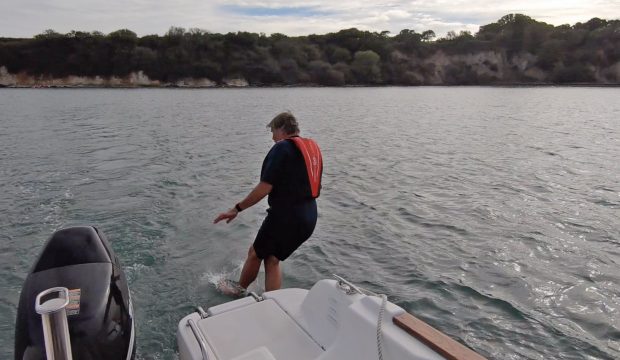Find out where relevant companies and associations stand on the issue of kill cord safety
RYA
Do you think the current design of the kill cord could be improved upon and why?
The current design has been around for a long time, is highly recognisable and is virtually universal in its simple design and the way it attaches to the helm (i.e. around the leg). It is a very safe solution which the helmsperson can look down and at a glance check that it is attached.
Which of the six readers’ suggestions do you favour?
A casual observer at any local harbour will note that there are many boats which go out on a sunny day without the helm wearing a kill cord. A change in behaviour is required. The idea that the kill cord is paramount to the safety of those on board and those in the vicinity of the boat needs more exposure though public awareness and training via a national media campaign and at slipways. The RYA has been issuing kill cord stickers for many years; kill cord wearing on RYA Powerboat courses is of utmost importance. The RYA is working with a number of agencies to try to increase public awareness of kill cord discipline.
Would you consider using one of these systems on your engines/boats?
At present, there is not enough evidence regarding the robustness of the new systems. It is an area we are watching with interest.
Do you think customers would be prepared to pay more for a safer, more user-friendly solution?
It is difficult to see how any of the systems described could be more safe than the current kill switch/kill cord system, which stops the engine should the helm move too far/be displaced from the controls. It is a very visible system (everyone can see if the helm is wearing it), which can be easily checked each time before departure by pulling out the kill cord to make sure the engine stops.
Equally, the idea of something which no one else can easily spot is working being more user-friendly is questionable.
Once the vessel itself is bought, safety kit tends to be very price sensitive. For example, many people already choose to buy a generic kill cord as a replacement when the time comes as, although these are pure plastic and without an inner core, they are freely available online for about ¼ of the price of a genuine engine manufacturer’s own kill cord. Whether the thousands of powerboat or sportsboat owners who already have a working kill cord system (whether or not they choose to wear it) will upgrade to one which will cost to buy and have retrofitted is not at all certain.
How would you like to see things develop from here?
There has certainly been quite a lot of discussion about kill cords in recent months; I hope that this will continue and that not only drivers but also passengers become more aware of the kill cord. It is important that passengers are able take on a measure of social responsibility, and that they do not feel embarrassed to point out if they spot the driver is not wearing the kill cord.









